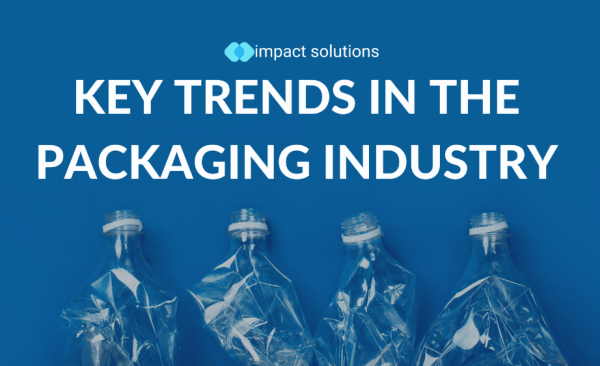 Add My Company
Add My Company
The Latest Trends in Plastic Packaging

With the packaging industry playing a large economic role in today’s society, businesses must stay up-to-date with the latest packaging trends in order to overcome competition and pressure from stakeholders. Yet the question remains: how can businesses successfully meet these new packaging trends?
The packaging industry plays a large economic role in today’s society. It helps businesses build a recognisable brand, enabling them to stand out from the competition. This, therefore, acts as a tool for consumers to make easier purchasing decisions and build brand loyalty. With a market size estimated to reach $1.2 trillion by 2028, there is significant growth and developments to be expected. Consequently, businesses must stay up-to-date with new packaging trends in order to overcome competition and pressure from stakeholders. But, what are these trends? And how can businesses prepare for them? This blog from Impact Solutions aims to answer these important questions.
Plastic Packaging Trends
With the rapid growth of e-commerce, stricter government regulations and end users’ increasing demand for eco-friendly and recyclable packaging, there are many trends emerging in the packaging industry. As government agencies enact more stringent regulations on sustainability, companies are having to adapt their methods in order to stay compliant with these regulations. They’re also becoming more conscious of their impact on the environment as consumers become less tolerant of companies that contribute heavily to pollution and climate change. In response, companies are turning towards recyclable or compostable solutions such as paper or cardboard packaging instead of plastic alternatives. Other packaging trends include the use of smart packaging solutions that provide product tracking and monitoring throughout the supply chain, as well as a move towards more personalised packaging that aims to enhance the customer experience. These strategies are becoming an essential part of the marketing strategy as it enables businesses to be more engaging with customers than traditional marketing methods would allow. With more trends to come, it is crucial businesses start to look into ways in which they are able to align with continuous changes and adapt accordingly.
How can businesses meet these new trends?
Packaging is an effective way for a brand to create an identity for itself, yet businesses will also need to consider whether it complies with legal requirements. This is where testing comes in. Testing is a critical measure to ensuring your packaging meets industry standards whilst also being able to enhance the consumer experience. Packaging is also an effective way to safely store and transport products, thus, businesses must ensure their packaging is reliable and durable for its intended purpose. Therefore, proper testing can ensure it meets these standards as well as consumer expectations. Impact Solutions are committed and dedicated to ensuring our clients are able to get accurate and actionable testing results. We do this by providing cutting-edge material testing, product development and technical development services to our customers, supporting them throughout the testing process to ensure they are able to meet their business goals. Our testing ultimately aids product safety throughout the supply chain as well as provides solutions to ensure your business is fully compliant with regulations and your brand is effectively presented at all times.
Plastic Packaging Tax
One of the most recent trends we have seen within the packaging industry is the plastic packaging tax. This came into effect in April 2022, creating a new tax on plastic packaging that does not contain at least 30% recycled plastic content. This will apply to manufacturers, importers and converters who handle more than one tonne of plastic packaging each year. The goal is to reduce the amount of raw material used in plastic product manufacturing and increase the use of recycled materials. Up until now, there was no standard way to determine the recycled content percentage in any material or product. Impact Solutions’ dedicated team have helped develop, as part of a large consortium, a new industry-led BSI Flex standard that allows the determination of the percentage of recyclate in packaging products. BS Flex 6228 focuses on PET by identifying the level of PET-recycled content in plastic products. By following these guidelines, businesses will be able to reach their sustainability goals and confidently showcase their commitment to minimising their environmental impact. Not only will this maximise their reputation, but it will also ensure they are able to meet consumer demand.
For more information on The Latest Trends in Plastic Packaging talk to PlastikCity Ltd

